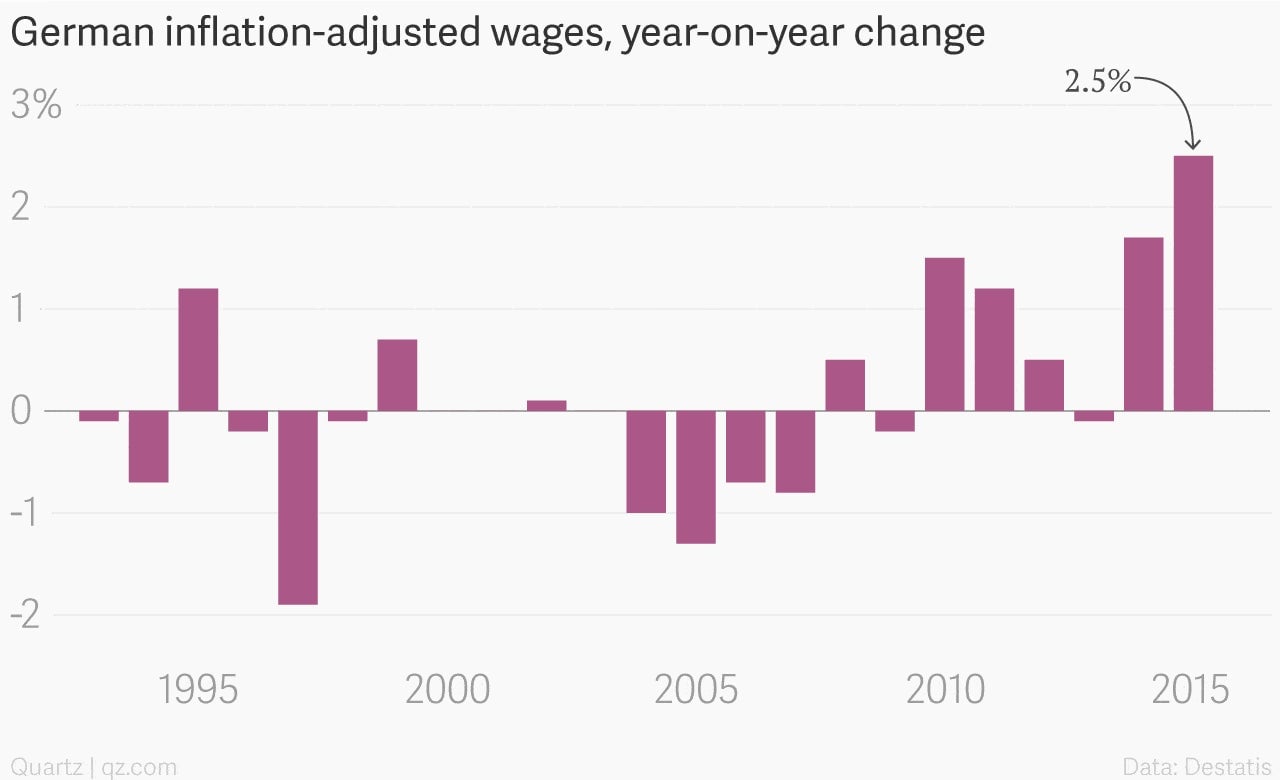Germany is raising wages, and so should the US
Germans received a nice raise last year.


Germans received a nice raise last year.
After decades of parsimonious pay increases, Germany’s workers saw their best inflation-adjusted wage increases in decades in 2015.

To some extent, this reflects the buoyancy of the German economy, which has been one of the world’s strongest in recent years.
But the rise in wages is also a policy decision.
It clearly reflects the easy-money policies of the European Central Bank which have weakened the euro, making Germany’s important export sector more competitive globally. The result? A record low unemployment rate of 6.2%, which has reinforced the bargaining position of workers.
And rising wages also represent political decisions by the government. Over the last year, Germany’s conservative-led government enacted a minimum wage for the first time. And it was unskilled workers that captured some of the greatest pay increases—4.1%—in 2015, suggesting that policy is working.
Against the current economic backdrop, these policy choices look prescient. With the weakness now emerging in economies such as China—a top market for German cars and industrial machinery—German consumers are increasingly well-positioned to pick up the economic slack. German retail sales have been on a tear lately, rising 2.7% in 2015, their biggest jump since 1994.
The US should pay attention—and there are some indications that it already has. For workers who aren’t managers, average hourly earnings were up a nominal 2.4% in December, compared to the prior year. In normal times, inflation of roughly 2% would have eaten much of that away, but because of incredibly low inflation right now, Americans feel better-off than they otherwise might.
The US industrial economy, though smaller than Germany’s as a percentage of GDP, is facing serious headwinds from the strong US dollar and a sharp decline in the energy sector. That will make a solid performance from the consumer sector even more important to growth going forward.
But Americans don’t yet seem confident enough to go on a spending spree. The US savings rate has risen consistently over the last year, from 4.6% in November 2014, to 5.3% in November of 2015, the most recent data available.
That suggests that that American consumers need more substantial raises to give the US economy the momentum it needs to overcome global headwinds.